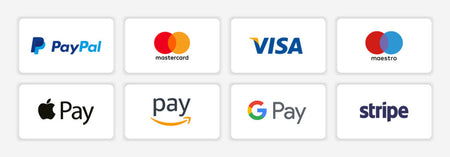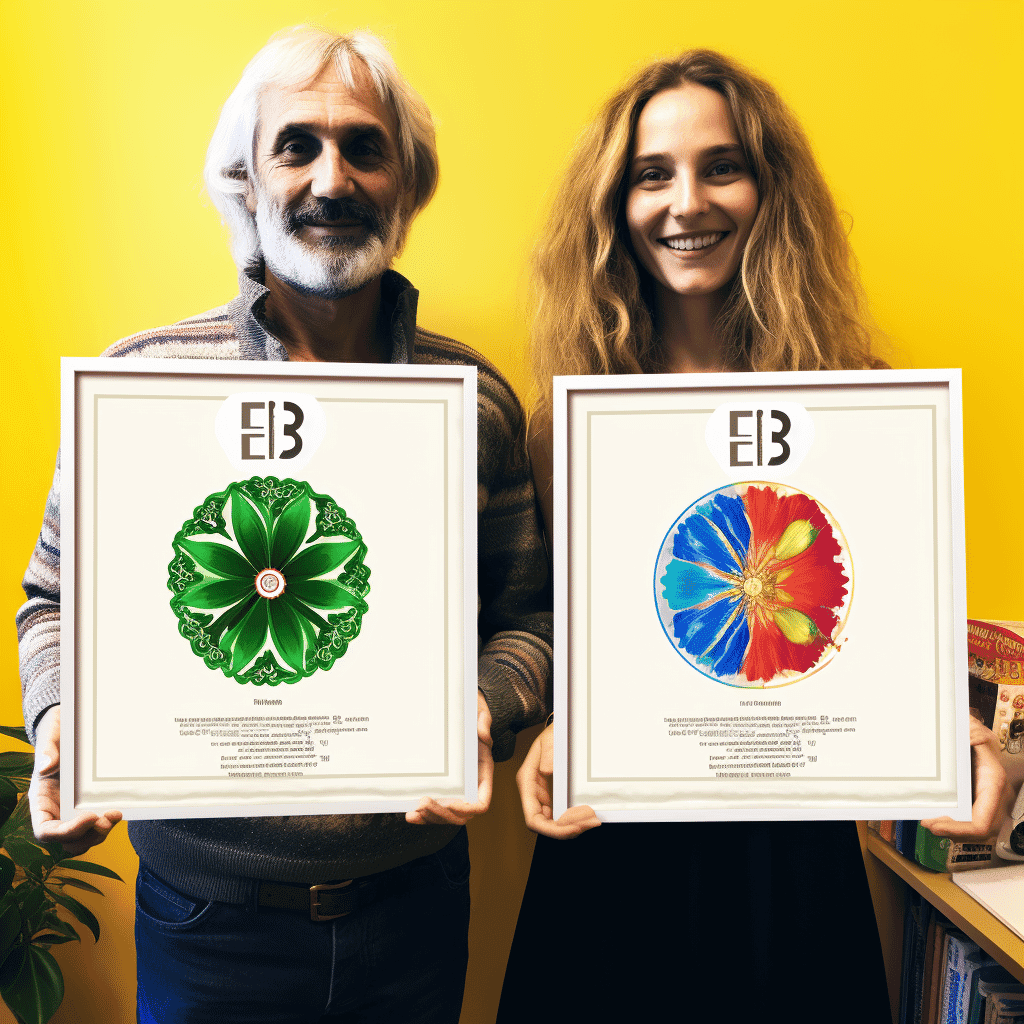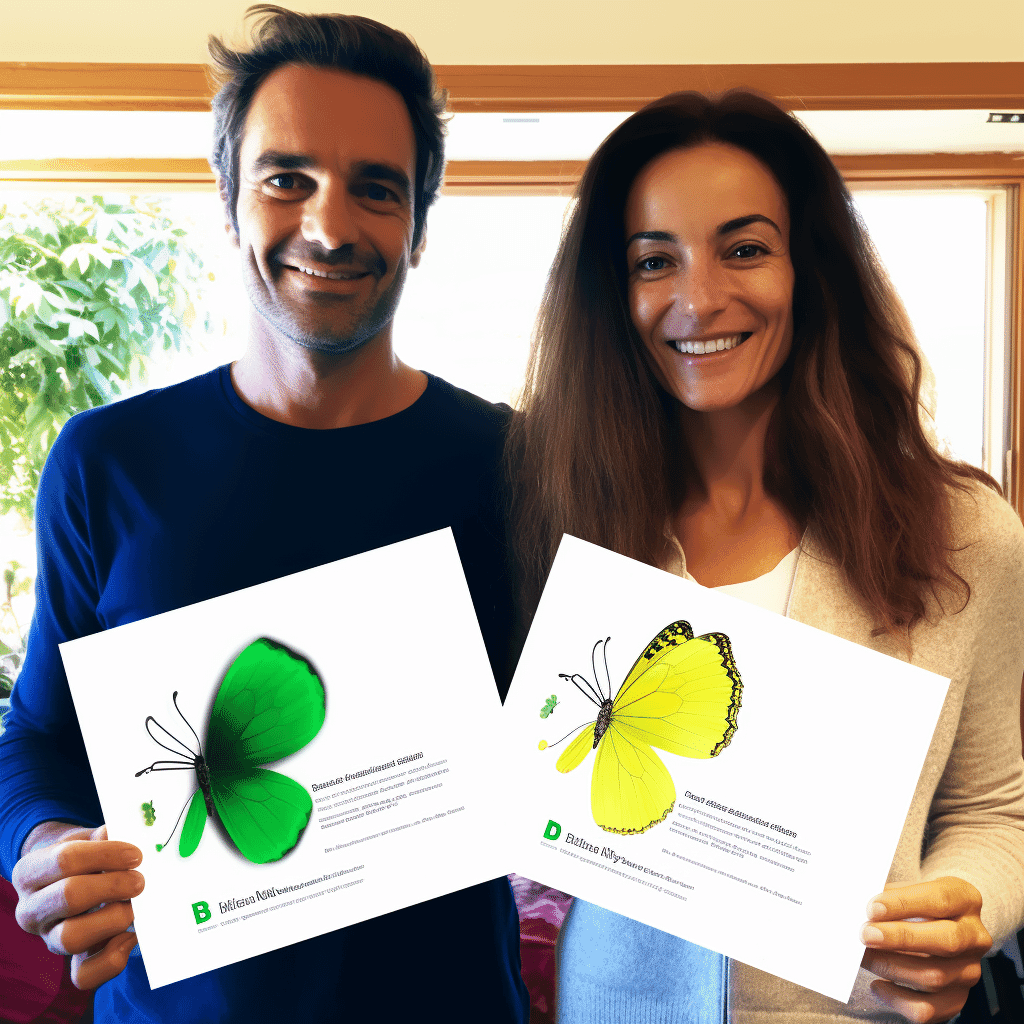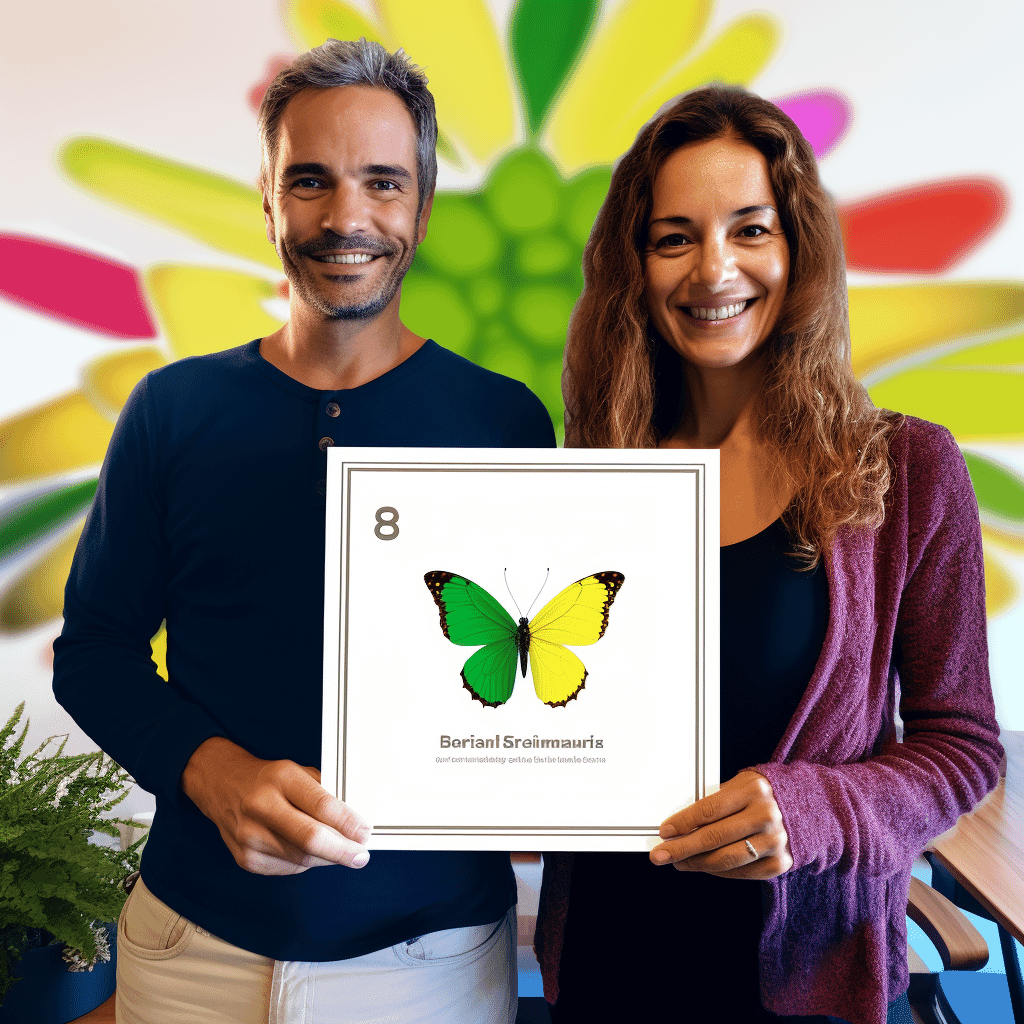Descrição
What is a course on good food handling practices like?
If you work or intend to work in the food industry, it is essential to know and apply good food handling practices. In addition to ensuring food safety, these practices are required by law and can prevent health problems for consumers.
What are good food handling practices?
Good food handling practices are a set of measures and procedures that must be adopted from the production to the consumption of food. They aim to ensure the quality, hygiene and safety of products, avoiding contamination by microorganisms, chemical substances and other agents that are harmful to health.
Why take a course on good food handling practices?
Taking a course on good food handling practices is essential for those who work in the food industry. In addition to being a legal requirement, the course provides theoretical and practical knowledge about hygiene, storage, preparation and correct handling of food.
Benefits of taking the course:
- Knowledge of current standards and legislation;
- Prevention of foodborne diseases;
- Reduction of waste;
- Guarantee of product quality;
- Professional appreciation;
- Customer trust;
- Avoid legal problems and financial losses.
What is taught in the good food handling practices course?
The good food handling practices course addresses several important topics for food safety. Among them, we can highlight:
- Personal hygiene;
- Hygiene of utensils and equipment;
- Pest control;
- Proper storage;
- Preparation and cooking of food;
- Transportation and distribution;
- Waste disposal;
- Temperature monitoring and control;
- Documentation and records.
How to find results about the course on good food handling practices?
To find more information about the course on good food handling practices, you can use the following SERP features mechanisms:
- Sitelinks
- Reviews
- People also ask
- Knowledge panel
- FAQ
- Top stories
- Recipes
- Find results on
- See results about
- Related searches
With these tools, you can find detailed information about the course, institutions that offer it, student testimonials, related recipes and much more.
Therefore, if you want to stand out in the food market and ensure consumer safety, be sure to invest in a course on good food handling practices. Food handling. Learn the correct techniques and always be up to date with current standards and legislation.
What is a good food handling practices course?
When it comes to food handling, safety and quality are paramount. That's why a good food handling practices course is so important. In this blog, we'll explore what this course is and how it can benefit both food professionals and consumers.
Why is it important to follow good food handling practices?
Improper food handling can lead to contamination and the spread of foodborne illnesses. This can cause serious health problems for consumers and also damage the reputation of commercial establishments. Therefore, following good food handling practices is essential to ensure food safety.
What is a good food handling practices course?
A good food handling practices course is a training course that covers the basic principles of food hygiene and safety. It is designed to enable food professionals to handle, store and prepare food safely, following the standards and regulations established by health authorities.
This course usually covers topics such as personal hygiene, temperature control, proper food storage, cleaning and disinfecting utensils and surfaces, preventing cross-contamination, among others. In addition, it may also include information on legislation and legal responsibilities related to food handling.
Benefits of a good food handling practices courseA good food handling practices course offers a number of benefits to both food professionals and consumers. Some of these benefits include:
- Increased food safety: By following the best practices learned in the course, professionals ensure that food is handled safely, reducing the risk of contamination.
- Regulatory compliance: The course helps professionals understand and comply with health regulations, avoiding legal problems and possible fines.
- Reputation and trust: Establishments that have professionals trained in good food handling practices gain a positive reputation and the trust of consumers.
- Reduced waste: By handling food correctly, waste caused by contamination or improper storage is avoided.
How to find good food handling practices courses?
There are several ways to find good food handling practices courses. One option is to search online using search engines like Google. Simply type in "good food handling practices courses" and add your location to find options near you.
You can also contact food regulatory agencies, such as the Health Surveillance Agency, which usually provide information on courses available in the region.
Conclusion
The good food handling practices course is essential to ensure the safety and quality of the food we consume. By following the good practices learned in this course, food professionals can avoid contamination and ensure consumer satisfaction. Therefore, if you work with food or are thinking about entering this field, be sure to look for a good food handling practices course.
ReferencesSitelinks: Sitelinks are additional links displayed in search results that direct to specific pages on a website.
Reviews: Reviews are consumer evaluations and opinions about a product, service or establishment.
People also ask: Frequently asked questions by users related to the searched topic.
Knowledge panel: The knowledge panel displays relevant information about a searched entity or topic.
FAQ: Frequently asked questions are a list of common questions and answers on a given topic.
Top stories: The main news related to the searched topic.
Recipes: Recipes related to the topic searched.
Find results on: Find results about a specific topic on other sites.
See results about: See results about a specific topic on other sites.
Related searches: Searches related to the topic searched.
| Benefits of the Good Food Handling Practices Course |
|---|
| Increased food safety |
| Regulatory compliance |
| Reputation and trust |
| Reduced waste |
What is the best course on good food handling practices?
When it comes to food handling, safety and hygiene are fundamental. Therefore, it is essential that professionals working in the area are properly trained and updated on good food handling practices.
The importance of good food handling practices
Good food handling practices are guidelines and procedures that must be followed to ensure the quality and safety of the food that is produced and consumed. These practices include everything from proper food storage to proper sanitation of utensils and equipment used.
In addition to ensuring food safety, good food handling practices also help prevent diseases transmitted by contaminated food, such as food poisoning.
The best course on good food handling practices
There are several courses available on the market that offer training in good food handling practices. However, it is important to choose a course that is recognized and that meets your needs.
One of the most recommended courses is the Good Food Handling Practices Course offered by the National Institute of Healthy Eating (INAS). This course comprehensively covers all aspects related to food handling, from reception to distribution.
The INAS Good Food Handling Practices Course is taught by experienced and qualified professionals who have up-to-date knowledge of current standards and regulations. In addition, the course offers a certificate of completion, which is essential to prove your qualification in the area.
To enroll in the INAS Food Handling Good Practices Course, simply access the institute's official website and fill out the registration form. The course is offered both in person and online, which makes it easier for people from different regions to access.
Sitelinks
Sitelinks are additional links displayed in Google search results that direct users to specific pages on a website. In the case of the INAS Food Handling Good Practices Course, sitelinks may include information about the program content, prices and payment methods, among others.
Reviews
Reviews are assessments made by people who have already taken the food handling good practices course. These reviews can be found on specialized websites or on social media. It is important to read the reviews before choosing a course, as they can provide valuable information about the quality of the course and student satisfaction.
People also ask
Frequently asked questions about the food handling good practices course may include questions such as "How long is the course?", "What are the prerequisites for enrolling?", "Does the course offer a certificate?", among others. It is important to answer these questions clearly and objectively to help users obtain the information they are looking for.
Knowledge panel
The knowledge panel is an information box displayed in Google search results, which provides a summary of the subject searched. In the case of the good food handling practices course, the knowledge panel can include information about the importance of the course, the benefits of training in this area, and the main topics covered in the course.
FAQ
The frequently asked questions (FAQ) section is a way to provide answers to the most common questions users have about the good food handling practices course. These questions can include questions about the course's workload, syllabus, payment methods, among others.
Top stories
Top stories are recent news related to the good food handling practices course. This news can include information about new regulations, cases of food poisoning, among other topics relevant to those who work in the food handling area.
Recipes
Although the good food handling practices course is not directly related to culinary recipes, it is possible to include information about healthy and safe recipes to be used in food handling. These recipes can be useful for professionals who work in industrial kitchens, restaurants and other establishments that deal with food preparation.
Find results on
The "Find results on" option allows users to find search results about the course on good food handling practices on websites other than Google. This can be useful to obtain more detailed information about the course, such as student testimonials, supplementary materials, among others.
See results about
The "See results about" option allows users to view search results related to the course on good food handling practices in different formats, such as videos, images and news. This can help to obtain more comprehensive and diverse information on the subject.
Related searches
Related searches are searches related to the course on good food handling practices that can be useful for users who want to deepen their knowledge on the subject. These searches may include terms such as "food legislation", "food handling hygiene", among others.
In short, the good food handling practices course is essential to ensure the safety and quality of the food that is produced and consumed. When choosing a course, it is important to consider its reputation, the reviews of other students and its suitability to your needs. With the knowledge acquired in this course, you will be prepared to act safely and responsibly in food handling.
What is the good food handling practices course for?
When it comes to food handling, safety and quality are paramount. essential. That's why the good food handling practices course is so important. In this blog, we'll explore the importance of this course and how it can benefit both food professionals and consumers.
Food safety comes first
Improper food handling can lead to serious health problems, such as food poisoning. The main objective of the good food handling practices course is to ensure food safety by teaching correct hygiene and handling techniques.
Knowledge about hygiene and contamination
The course covers topics such as personal hygiene, cleaning and disinfection of utensils and equipment, temperature control, proper storage and prevention of cross-contamination. This knowledge is essential to prevent the proliferation of bacteria and other harmful microorganisms.
Professional qualificationIn addition to ensuring food safety, the good food handling practices course is also a form of professional qualification. Many establishments require their employees to have this certification, as it demonstrates commitment to food quality and safety.
Benefits for consumersConsumers also benefit from the course on good food handling practices. By attending establishments where employees have this certification, they are assured that the food is being prepared and handled in a safe and hygienic manner.
- Reduced risk of food poisoning
- Quality of food served
- Trust in the establishment
| Benefits for professionals | Benefits for consumers |
|---|---|
| Greater employability | Reduced risk of food poisoning |
| Professional appreciation | Quality of food served |
| Growth opportunities in the career | Confidence in the establishment |
In short, the good food handling practices course serves to ensure food safety, qualify professionals in the food sector and provide confidence to consumers. If you work with food or are thinking about entering this field, be sure to invest in this important training.
Who can take the good food handling practices course?
Good food handling practices courses are essential to ensure the safety and quality of the food that is produced and consumed. They are aimed at professionals who work directly with food, such as cooks, chefs, food handlers in restaurants, snack bars, bakeries, among other establishments.
In addition, anyone interested in learning about good food handling practices can take the course. It is recommended for housewives, gastronomy students, entrepreneurs who want to open a business in the food industry, among others.
Benefits of taking a course in good food handling practices
Taking a course in good food handling practices brings several benefits for both professionals and professionals in the area and for people who wish to acquire knowledge on the subject. Some of the main benefits are:
- Food safety: The course teaches correct hygiene, storage and food handling techniques, ensuring consumer safety.
- Food quality: Learning good food handling practices contributes to the production of quality food, avoiding contamination and preserving the flavor and texture of food.
- Technical knowledge: The course offers technical knowledge on health legislation, temperature control, expiration dates, among other important aspects for the proper handling of food.
- Job opportunities: Professionals who have a certificate in good food handling practices have a better chance of getting a job in establishments that require this requirement.
How to choose a course in good food handling practices
When choosing a course in good food handling practices, food, it is important to consider some aspects. Check out some tips:
- Reputation of the institution: Research the institution that offers the course and check its reputation in the market.
- Course content: Analyze the course's syllabus and check if it covers all the aspects necessary for the correct handling of food.
- Qualification of instructors: Check if the course instructors have qualifications and experience in the area.
- Certificate: Make sure that the course offers a valid certificate, recognized by the appropriate agencies.
Taking a course on good food handling practices is essential to ensure the safety and quality of the food that is produced and consumed. In addition, it can open doors to new job opportunities and improve technical knowledge in the food industry.
References:
We hope this article has clarified who can take a course on good food handling practices. food handling and the importance of this knowledge to ensure food safety. If you are interested in the subject, be sure to look for reliable and qualified courses. Invest in your knowledge and be prepared to act responsibly and safely when handling food.
How long does a course on good food handling practices last?
If you are interested in working in the food industry, it is essential to have knowledge about good handling practices. These practices ensure food safety and are essential to avoid contamination and foodborne illnesses.
In this blog, we will talk about the duration of a course on good food handling practices, in addition to covering some important information on the subject.
What are good food handling practices?
Good food handling practices are a set of measures that must be adopted by all professionals who work with food, from production to consumption. These practices aim to guarantee the quality and safety of food, avoiding contamination by microorganisms that are harmful to health.
Some of the good food handling practices These include:
- Wash your hands properly before handling food;
- Use clean and sanitized utensils;
- Store food properly;
- Maintain the correct storage temperature;
- Avoid cross-contamination, that is, contact between raw and cooked food;
- Perform proper food hygiene;
- Among others.
Duration of the good food handling practices course
The duration of the good food handling practices course may vary depending on the institution offering the training. Generally, these courses have a minimum workload established by current legislation.
According to the National Health Surveillance Agency (ANVISA), the minimum workload for the course on good food handling practices is 4 hours. However, it is important to note that some institutions may offer courses with a longer workload, covering topics related to food handling in greater depth.
Importance of taking the course on good food handling practices
Taking the course on good food handling practices is essential for those who work in the food industry, whether in restaurants, snack bars, bakeries, food industries, among other establishments.
In addition to being a legal requirement, the course provides essential knowledge to ensure food safety. Through the course, professionals learn about the importance of personal hygiene, cleaning utensils and the work environment, proper food storage, among other aspects.
With the certificate of good food handling practices, professionals have a better chance of getting jobs in the food industry, since establishments value food safety and seek qualified professionals.
Conclusion
In summary, the course on good food handling practices is essential for those who work in the food industry. The course duration may vary, but the minimum workload established by ANVISA is 4 hours.
Taking the course is important not only to comply with legislation, but also to acquire knowledge that guarantees food safety and the quality of products offered to consumers.
Therefore, if you are interested in working in the food industry, be sure to take the course on good food handling practices and become a qualified and valued professional in the market.
References:
Read also:
- Sitelinks
- Reviews
- People also ask
- Knowledge panel
- FAQ
- Top stories
- Recipes
- Find results on
- See results about
- Related searches
How much does a course on good food handling practices cost?
If you work or intend to work in the food industry, it is essential to have knowledge about good food handling practices. In addition to ensuring food safety, this knowledge is required by law in many countries. ises, including Brazil.
What are good food handling practices?
Good food handling practices are a set of measures and procedures that must be adopted by establishments that handle food, such as restaurants, snack bars, bakeries, among others. These practices aim to ensure the quality and safety of food, preventing contamination and the transmission of diseases.
Why take a course in good food handling practices?
Taking a course in good food handling practices is essential for those who work or intend to work in the food industry. In addition to being a legal requirement, the course provides important knowledge about hygiene, storage, correct food handling, among other fundamental aspects to ensure food safety.
Benefits of taking a course in good food handling practices:
- Knowledge of current standards and legislation;
- Prevention of foodborne diseases;
- Reduction of waste;
- Guarantee of food quality;
- Professional recognition;
- Customer trust;
- Avoid legal problems and fines.
How much does a course in good food handling practices cost?
The cost of a course in good food handling practices can vary according to several factors, such as the educational institution, the number of hours, the program content, among others. It is important to research and compare different options before making your choice.
Some institutions offer in-person and online courses, with prices ranging from R$100.00 to R$500.00.
| Institution | Modality | Price |
|---|---|---|
| Food Institute | In-Person | R$250.00 |
| Gastronomy School | Online | R$150.00 |
| Food Training Center | In-person | R$ 350.00 |
It is important to emphasize that the cost of the course should not be the only criterion for choosing. Check the reputation of the institution, the quality of the content offered and whether the certificate issued is recognized by the competent bodies.
Where can I find courses on good food handling practices?
To find courses on good food handling practices, you can use the following resources:
In addition, you can search for courses at educational institutions, unions, associations and regulatory bodies in the food sector.
Invest in your training and be prepared to act safely and responsibly when handling food. Remember that food safety is essential for the health of consumers and the success of your business!
References:
Where to find courses on good food handling practices
Ensure food safety is essential in any establishment that deals with food manipulation
Estimar frete
Payment & Security

Featured collection





















![Curso de Angular e NodeJS - O Guia da Pilha MEAN [Edição 2023] - IBRATH Instituto Brasileiro de Terapias Holísticas teste011020230809](http://enciclopedia.paginasdabiblia.com/cdn/shop/products/a19556.png?v=1699935448&width=1024)




![Curso de Docker & Kubernetes: O Guia Prático [Edição 2023] - IBRATH Instituto Brasileiro de Terapias Holísticas teste011020230809](http://enciclopedia.paginasdabiblia.com/cdn/shop/products/a19570.png?v=1699935525&width=1024)





















Dúvidas Gerais
Após a confirmação do pagamento, você receberá um e-mail com todas as instruções para acessar seus cursos. O e-mail incluirá um link para a plataforma de ensino, onde você poderá fazer login utilizando suas credenciais cadastradas no momento da compra. Caso seja um curso em formato de arquivo para download, o mesmo estará disponível na área do aluno e poderá ser acessado diretamente pelo link enviado. Se você não receber o e-mail de acesso em até 24 horas, verifique sua caixa de spam ou entre em contato com nossa equipe pelo e-mail suporte@amentil.com.br.
Após a confirmação do pagamento, seu pedido será processado e enviado para o endereço cadastrado. Você receberá um e-mail com os detalhes do envio, incluindo o código de rastreamento para acompanhar a entrega. Trabalhamos com transportadoras confiáveis e os prazos variam de acordo com o método de envio escolhido e sua localização. É importante garantir que o endereço de entrega esteja correto para evitar atrasos. Caso tenha dúvidas ou problemas com a entrega, nossa equipe de suporte está à disposição pelo e-mail suporte@amentil.com.br.
Você pode tirar dúvidas diretamente com nossa equipe de suporte por diversos canais:
- E-mail: Envie sua pergunta para suporte@amentil.com.br, e nossa equipe responderá em até 2 dias úteis.
- Telefone: Ligue para +55 (48) 1234-5678, disponível de segunda a sexta, das 9h às 18h.
- WhatsApp: Envie uma mensagem para +55 (48) 91265-4321 e receba atendimento rápido e prático.
- Formulário de Contato: Preencha o formulário disponível em nosso site na página Contato.
- Redes Sociais: Você também pode enviar suas dúvidas pelo Instagram ou Facebook em @amentil.sa.
Estamos sempre prontos para ajudar!
Reembolso e garantias
O prazo de reembolso pode variar dependendo da forma de pagamento utilizada:
- Cartão de Crédito: O estorno será realizado em até 7 dias úteis após a aprovação do reembolso, mas o crédito poderá aparecer na sua fatura em um prazo de 30 a 60 dias, conforme a política da operadora do cartão.
- Boleto Bancário ou Transferência: O valor será devolvido via depósito em conta bancária em até 7 dias úteis após a aprovação do reembolso.
Você pode solicitar a devolução de produtos físicos seguindo o passo a passo abaixo:
- Entre em contato com nosso suporte:
- Aguarde nossa resposta:
Nossa equipe analisará sua solicitação em até 3 dias úteis e fornecerá as instruções detalhadas para a devolução. - Prepare o produto:
- Envie o produto:
- Reembolso ou troca:
Nosso compromisso é fornecer uma experiência confiável e segura ao acessar nossa enciclopédia online. Garantimos a qualidade dos serviços e funcionalidades oferecidos, seguindo as condições descritas abaixo:
1. Garantia de Acesso
- Disponibilidade: Oferecemos garantia de disponibilidade da enciclopédia online 24 horas por dia, 7 dias por semana, exceto durante períodos programados de manutenção ou por problemas técnicos fora do nosso controle.
- Resolução de Problemas: Em caso de interrupções no serviço, nossa equipe técnica atuará para restaurar o acesso no menor tempo possível.
2. Garantia de Conteúdo
- Precisão e Atualização: Todo o conteúdo disponibilizado é cuidadosamente revisado para garantir precisão e relevância. No entanto, a enciclopédia online é constantemente atualizada, e não podemos garantir a exatidão absoluta em casos de informações sujeitas a mudanças rápidas.
- Correção de Erros: Caso identifique erros ou inconsistências no conteúdo, você pode nos informar pelo e-mail conteudo@amentil.com.br, e faremos a análise e correção, se necessário.
3. Garantia de Segurança
- Proteção de Dados: Utilizamos tecnologias avançadas para proteger suas informações pessoais e garantir que sua navegação na enciclopédia seja segura.
- Privacidade: Todos os dados coletados seguem as diretrizes da nossa Política de Privacidade.
4. Garantia de Reembolso
Para assinaturas da enciclopédia online:
- Direito de Arrependimento: Você pode solicitar o cancelamento e reembolso integral em até 7 dias corridos após a compra, desde que não tenha acessado conteúdos pagos da plataforma.
- Problemas Técnicos: Caso não consiga acessar os conteúdos devido a falhas técnicas imputáveis à plataforma, garantimos suporte prioritário e, se o problema não for resolvido, você pode solicitar reembolso proporcional ao período não utilizado.
5. Limitações
- Conexão à Internet: Não garantimos acesso à enciclopédia em situações de instabilidade ou falhas na conexão de internet do usuário.
- Uso Indevido: O acesso e uso da enciclopédia são pessoais e intransferíveis. O compartilhamento de credenciais pode resultar na suspensão ou cancelamento da assinatura sem reembolso.
6. Contato para Garantias
Caso precise de suporte ou queira exercer algum direito de garantia, entre em contato conosco:
- E-mail: suporte@amentil.com.br
- Telefone: +55 (48) 1234-5678
- Horário de atendimento: Segunda a sexta, das 9h às 18h.



